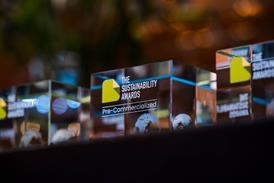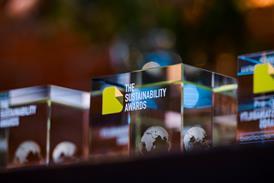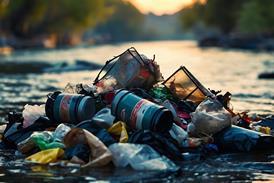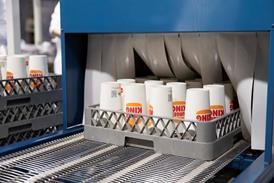All Regulation & Compliance articles
-
 Article
ArticleCompostable wood pulp films recommended to replace polymer-based glitter
Futamura recommends the use of its certified compostable, fibre-based NatureFlex films to manufacture glitter in line with upcoming EU restrictions on microplastic leakage.
-
 Article
ArticleChemical packaging and labelling regulation postponed by European Council
Today, the European Council has approved plans to postpone rules on the labelling and packaging of chemicals to January 2028 – a move hoped to give businesses more time and legal certainty when implementing changes.
-
 Article
ArticleValpak makes PackFlow reports available online
Valpak by Reconomy has made its full catalogue of PackFlow reports accessible through a dedicated website, including UK packaging flow models and data used by WRAP to guide its Plastics Pact targets.
-
 Article
ArticlePlastics value chain players call on European Commission to close gap between virgin and recycled plastics prices
Over 110 organisations from across Europe’s plastics value chain have united to deliver an Industry Statement to officials at the European Commission’s Directorate-General for Environment (DG-ENV), calling to ‘close the gap’ between virgin and recycled plastic prices.
-
 Article
ArticleINEOS files major anti-dumping cases with the European Commission
Global chemical company INEOS has revealed that it has filed - or is in the process of filing - 10 major anti-dumping cases with the European Commission, citing the need to safeguard European customers, suppliers and contractors from low-cost imports from Asia, the Middle East and the United States.
-
 Article
ArticleLimetrack secures over €1 million in funding to scale ‘smart bin’ in UK and Europe
London-based food waste technology company Limetrack has revealed it has raised over €1 million to scale production and deployment of its Smart bins, designed to automatically weigh and report waste and carbon emissions.
-
 Article
ArticleCircpack and SAP collaborate on EPR reporting and recyclability assessment service
Circpack by Veolia has announced a partnership with SAP to provide its cloud-based solution for EPR reporting and recyclability assessments, including fee structures and calculation rules with global coverage.
-
 Sponsored Content
Sponsored ContentGöncay Packaging on paper vs. plastics – and balancing both in one portfolio
In this edition of our ‘In Conversation With…’ series, Göncay Packaging’s managing director, Levent Göncay, discusses the company’s product portfolio, its in-house production process, the costs of plastic vs. paper packaging, and more.
-
 Article
ArticleOne week until the Sustainable Packaging Summit: what to expect
Only one week to go until the Sustainable Packaging Summit! Are you wondering what to expect from this year’s even bigger, even better event? Read on for a deep dive into this year’s agenda.
-
 Article
ArticleWest Pharmaceutical Services reveals pre-fillable syringe platform
West Pharmaceutical Services (West) has unveiled its West Synchrony Prefillable Syringe (PFS) System at CPHI Worldwide in Frankfurt, Germany, offering a ‘fully verified’ platform from a single supplier.
-
 Article
ArticleEU Commission’s new guide helps Member States calculate EPR costs
The European Commission has provided optional guidance to help Member States calculate Extended Producer Responsibility costs under the Single-Use Plastics Directive.
-
 Article
ArticleEverything you need to know about the EU’s packaging and recycling trends
In response to Eurostat’s latest packaging waste data, we have compiled the key takeaways, from a country-by-country rundown on recycling rates to consumption trends for lightweight plastic bags.
-
 Article
ArticleBrazil mandates reverse logistics system for plastic packaging from 2026
Under a new Brazilian law, market operators must participate in a reverse logistics system for primary, secondary, and tertiary plastic packaging from January 2026 – meeting targets for 22% recycled content and a 32% recovery rate next year.
-
 Article
ArticleInside the fight to save Europe’s PET industry
With global competition increasing and costs soaring, the European PET industry is currently facing an uncertain future. Antonello Ciotti, president of Petcore (the organisation that represents the European PET value chain), warns that the EU must act now to save an industry that is crucial to its sustainability and manufacturing ambitions.
-
 Article
ArticleRegulation on plastic pellets to reduce losses by up to 74% – yet exempt SMEs
Today, the European Parliament will undertake a second reading of a regulation addressing plastic pellet losses across the supply chain. Organizations like the Rethink Plastic Alliance have praised its ultimate goal, but questioned its slow implementation and exemptions for SMEs.
-
 Article
ArticleFE Green PET receives €30.5M in financing from HSBC Malaysia
Malaysian manufacturer FE Green PET states it has secured roughly €30.5 million in financing from HSBC Malaysia for the expansion of its recycled polyethylene terephthalate (rPET) resin production plant in Melaka.
-
 Article
ArticleHow will the EU build a truly circular economy?
Will the EU’s Circular Economy Act help or hinder our industry? Jessika Roswell, European Commissioner for Environment, Water Resilience and a Competitive Circular Economy, lays out her vision in a keynote address at the European Policy Centre.
-
 Article
ArticleSmurfit Westrock launches Bag-in-Box alternative to HDPE bottles and jerrycans
Smurfit Westrock van Mierlo, based in Belgium, has introduced the Bag-in-Box Powergrip, designed to replace traditional 2-to-5-litre HDPE bottles and jerrycans and said to align with the upcoming European PPWR legislation.
-
 Article
ArticleIndustry players oppose a second delay for EU Deforestation Regulation
Nestlé, Mars Wrigley, Ferrero, and Tony’s Chocolonely have signed an open letter urging the European Commission not to postpone the EU Deforestation Regulation for a second time, warning that further delays will have environmental consequences.
-
 Article
ArticleThe problem with Extended Producer Responsibility
More than a decade into Extended Producer Responsibility implementation across Canadian provinces, program costs have ballooned, while recycling rates have flatlined or even declined. Why has this happened, and what lessons can European countries learn as they look to implement their own PPWR-mandated EPR schemes?





